Research
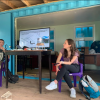 Briar Goldwyn is a fourth-year PhD student researching multi-hazard housing safety and disaster risk reduction. She recently returned from fieldwork in Puerto Rico.
Briar Goldwyn is a fourth-year PhD student researching multi-hazard housing safety and disaster risk reduction. She recently returned from fieldwork in Puerto Rico.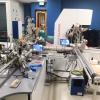 CU Boulder’s East Campus is now home to the High-Sensitivity Low-Energy Ion Scattering (HS-LEIS) Spectrometer, a tool researchers from across the Rocky Mountain region will use for advanced materials characterization and analysis.
CU Boulder’s East Campus is now home to the High-Sensitivity Low-Energy Ion Scattering (HS-LEIS) Spectrometer, a tool researchers from across the Rocky Mountain region will use for advanced materials characterization and analysis.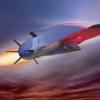 The University of Colorado Boulder has received a five-year, $7.5 million grant to advance the science of hypersonic flight.Iain Boyd, a professor in the Ann and H.J. Smead Department of Aerospace Engineering Sciences and the director of the Center
The University of Colorado Boulder has received a five-year, $7.5 million grant to advance the science of hypersonic flight.Iain Boyd, a professor in the Ann and H.J. Smead Department of Aerospace Engineering Sciences and the director of the Center The Division of Polymeric Materials: Science and Engineering recognized Martinez's research on membrane technologies that can ensure more scientifically reliable water treatment filtration systems.
The Division of Polymeric Materials: Science and Engineering recognized Martinez's research on membrane technologies that can ensure more scientifically reliable water treatment filtration systems.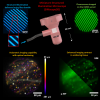 In the journal Biomedical Optics Express, CU electrical and mechanical engineering researchers describe their new SIMscope3D, a miniature microscope designed for high-resolution 3D images.
In the journal Biomedical Optics Express, CU electrical and mechanical engineering researchers describe their new SIMscope3D, a miniature microscope designed for high-resolution 3D images. Caleb Cord (PhDEnvEngr'22) is the first author on a new paper in Science of The Total Environment that looks at water, sanitation, and hygiene (WASH) services in developing countries from the systems level.
Caleb Cord (PhDEnvEngr'22) is the first author on a new paper in Science of The Total Environment that looks at water, sanitation, and hygiene (WASH) services in developing countries from the systems level. A new publication headed by the Mortenson Center in Global Engineering seeks to create better alignment among academic programs and sector needs when it comes to training engineers in global development.
A new publication headed by the Mortenson Center in Global Engineering seeks to create better alignment among academic programs and sector needs when it comes to training engineers in global development.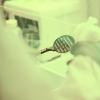 The Colorado Shared Instrumentation in Nanofabrication and Characterization (COSINC) facility will host a two-day workshop and training session on Material 3D-Nanofabrication and Characterization from 8 a.m.- 5 p.m. April 21 and 22 on the CU Boulder campus.
The Colorado Shared Instrumentation in Nanofabrication and Characterization (COSINC) facility will host a two-day workshop and training session on Material 3D-Nanofabrication and Characterization from 8 a.m.- 5 p.m. April 21 and 22 on the CU Boulder campus.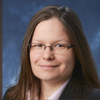 Assistant Professor Mija Hubler is a recipient of a three year, $548,000 National Science Foundation (NSF) Faculty Early Career Development (CAREER) award for her proposal “Mechanical Modeling of Living Building Materials for Structural Applications.”
Assistant Professor Mija Hubler is a recipient of a three year, $548,000 National Science Foundation (NSF) Faculty Early Career Development (CAREER) award for her proposal “Mechanical Modeling of Living Building Materials for Structural Applications.”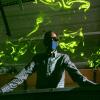 The Odor2Action Network brings together international scientists to understand a fundamental problem in neuroscience—how odors lead to behavioral actions. Using the olfactory circuit, researchers aim to achieve an end-to-end understanding of how brains organize and process information from odors in the environment to guide adaptive behaviors, and how these actions modify odor perception.
The Odor2Action Network brings together international scientists to understand a fundamental problem in neuroscience—how odors lead to behavioral actions. Using the olfactory circuit, researchers aim to achieve an end-to-end understanding of how brains organize and process information from odors in the environment to guide adaptive behaviors, and how these actions modify odor perception.

